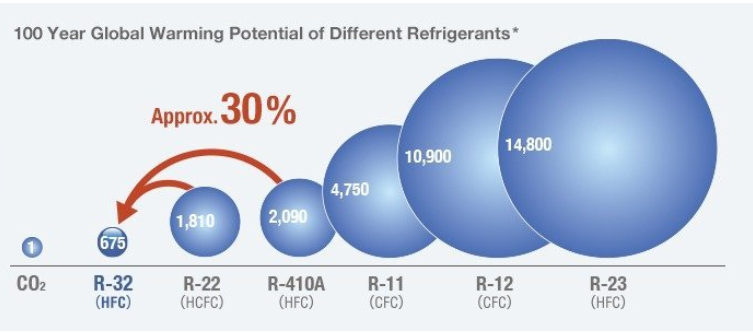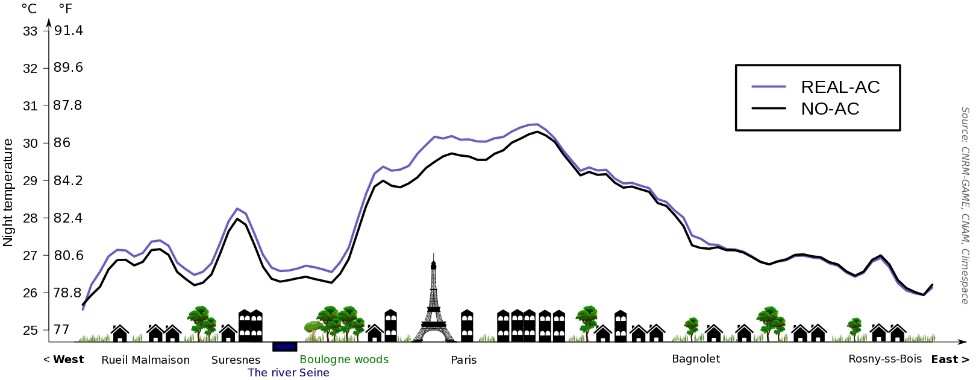The effects of antifreeze and green house gas from traditional air source HVAC are seen on a local, national and global level. Contamination of heat islands and global warming are devastating effects of traditional energy-extensive consumption HVAC units. The extremity of these HVAC system negatives has left the government focused on a new system all together rather than placing bandaids on the problem. New green technology such as geothermal system and solar system are growing in popularity with improved efficiency.
Antifreeze and the Environment
One major negative outcome of using high energy consuming HVAC systems is that they contribute to global warming. More specifically, HVAC systems both release CO2 as well as employ HFCs; both of which are greenhouse gases that trap heat and deplete the ozone layer. During the manufacturing process, if the units are disposed, these HFCs may become hazardous. Although they are emitted from the system less often and likely than CO2, HFCs are more potent in the atmosphere. HFCs trap thousands of times more heat than CO2 .
Prior to 2010, most air conditioning units installed in the US used a refrigerant called R-22 commonly referred to as Freon. R-22 is a hydrochlorofluorocarbon, which is a greenhouse gas and is therefore extremely detrimental to the ozone layer. Because of the extensive damage to the ozone layer, the US government banned the installation of new units using R-22 as of 2010. Today, new air conditioning units use (R-410A) Puron, which is a HFC with little to no ozone depletion but high global warming potential. In fact R-410A has a higher global warming potential than R-22. This means that R-410A releases more Than R-22 so it is questioned if the switch is as beneficial as the market plays it off to be.
Currently research is being done to evaluate R-32 which has both no ozone depletion and very low potential for global warming in spite of being a HFC much like R-410A. The problem with R-32 is that it is much more difficult to handle in comparison to other refrigerants. Figure 1 illustrates the comparison between the three refrigerants discussed.

The effects of antifreeze and green house gas from traditional air source HVAC are seen on a local, national and global level. Contamination of heat islands and global warming are devastating effects of traditional energy-extensive consumption HVAC units. The extremity of these HVAC system negatives has left the government focused on a new system all together rather than placing bandaids on the problem. New green technology such as geothermal system and solar system are growing in popularity with improved efficiency.
Antifreeze and the Environment
One major negative outcome of using high energy consuming HVAC systems is that they contribute to global warming. More specifically, HVAC systems both release CO2 as well as employ HFCs; both of which are greenhouse gases that trap heat and deplete the ozone layer. During the manufacturing process, if the units are disposed, these HFCs may become hazardous. Although they are emitted from the system less often and likely than CO2, HFCs are more potent in the atmosphere. HFCs trap thousands of times more heat than CO2 .
Prior to 2010, most air conditioning units installed in the US used a refrigerant called R-22 commonly referred to as Freon. R-22 is a hydrochlorofluorocarbon, which is a greenhouse gas and is therefore extremely detrimental to the ozone layer. Because of the extensive damage to the ozone layer, the US government banned the installation of new units using R-22 as of 2010. Today, new air conditioning units use (R-410A) Puron, which is a HFC with little to no ozone depletion but high global warming potential. In fact R-410A has a higher global warming potential than R-22. This means that R-410A releases more Than R-22 so it is questioned if the switch is as beneficial as the market plays it off to be.
Currently research is being done to evaluate R-32 which has both no ozone depletion and very low potential for global warming in spite of being a HFC much like R-410A. The problem with R-32 is that it is much more difficult to handle in comparison to other refrigerants. Figure 1 illustrates the comparison between the three refrigerants discussed.
Carbon Demands
Air conditioners have an environmental impact in more ways than one, but the most significant are the inputs and the outputs. Air conditioning units are powered by electricity which demands the burning of fossil fuels. The effects of electricity production alone can be very detrimental to the world in which we live. As stated prior; is a major variable when it comes to air conditioning. In fact, nearly 90% of homes in America have air conditioning units; accounting for approximately 6% of the country’s residential energy uses. Each year keeping us cool these units produce about 100 million tons of carbon dioxide. And although some may not believe these effects, it can undoubtedly be both head and felt. Cities are about 10° F hotter than suburbs and rural areas because they use more HVAC systems. These hot urban areas are referred to as heat islands. The cycle seems to be never ending. As we demand to stay “cool”, we actually warm the earth even more.

Reference
[1] Dunbar, Brian. “Satellites Pinpoint Drivers of Urban Heat Islands in the Northeast.” NASA,
NASA, www.nasa.gov/topics/earth/features/heat-island-sprawl.html.
[2] Environmental Working Group. “EWG’s Tap Water Database: What’s in Your Drinking Water?”
EWG Tap Water Database, www.ewg.org/tapwater/system.php?pws=VA610730.
[3] Fletcher, Jenna. “Refrigerant Poisoning: Causes, Symptoms, and Treatment.” Medical News
Today,
MediLexicon International, www.medicalnewstoday.com/articles/322165.php.
[4] “Forums.” Global Warming Potential vs Ozone Depletion Potential,
www.hvactechgroup.com/hvacforum/index.php?topic=211.0.
[5] Olson, David. “City Shuts 2 Water Wells after Finding Pollution.” Newsday, Newsday, 29 Jan.
2018,
www.newsday.com/long-island/nassau/glen-cove-wells-freon-water-pollution-1.16399663.

Recent Comments